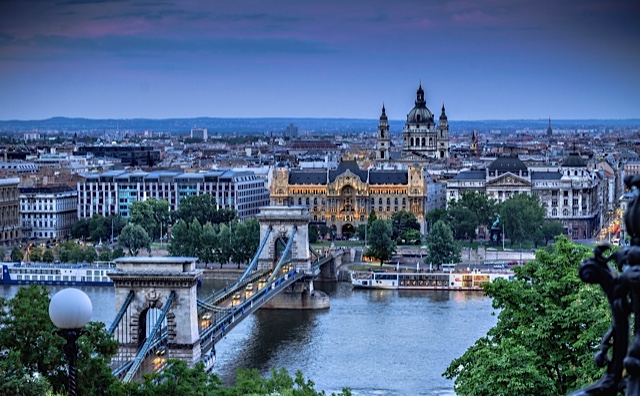
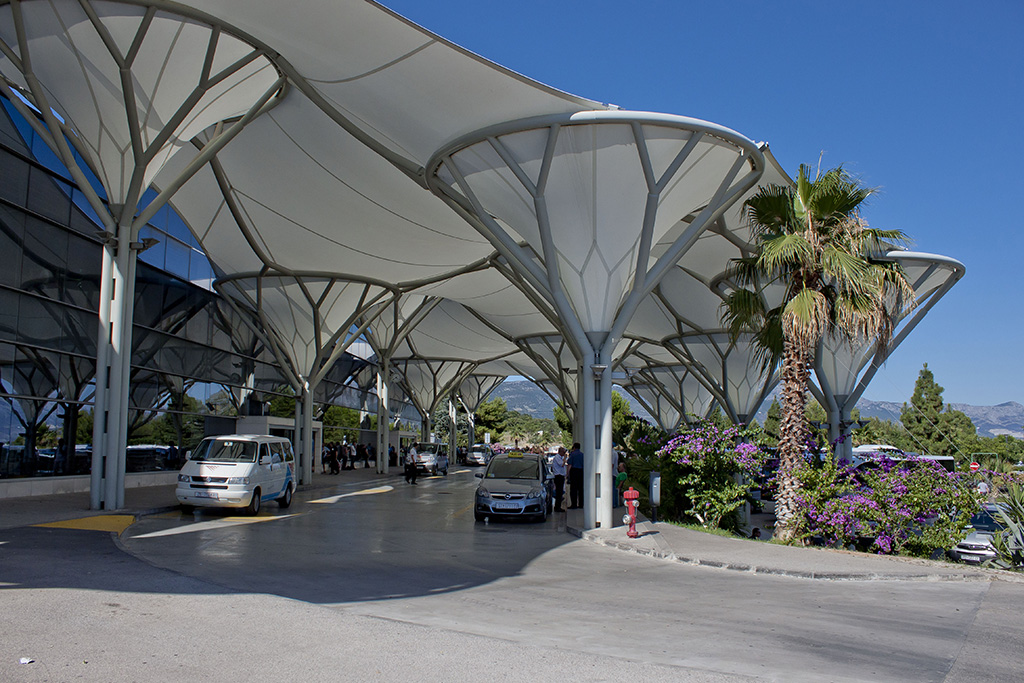
The following morning we arrived at the bus station to catch a ride to the Split Airport. The day started on an amusing note. When we handed our bus tickets to the driver, I was surprised to see the same man who had taken us on a detour to somewhere in Bosnia and Herzegovina. I didn’t think to ask him, “Where were we in Herzegovina?” However, I did ask about our route to the airport, and he laughed. Nonstop, he assured me: bus station directly to the airport. But it proved only a partial truth; we made two stops to pick up some associates of his, but other than that, the trip was uneventful.
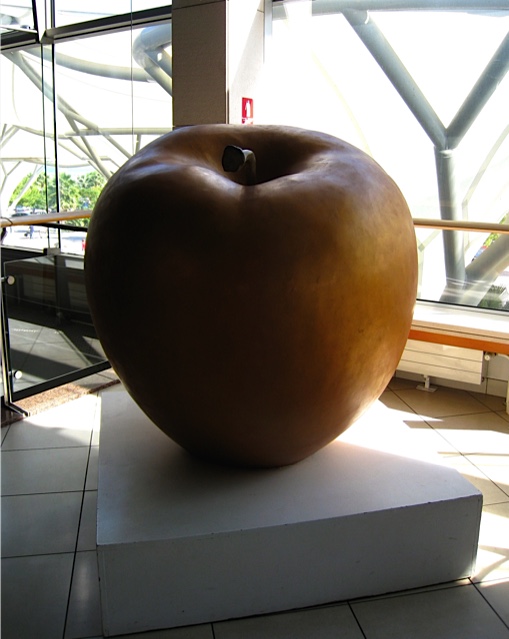 I’ve been in my share of airports, and while some can be interesting and/or fun for one reason or another (the food or shops, for example), I was literally blown away by the modern architecture of the Split Airport. And never while waiting for a flight to depart have I felt the compunction to wander an airport to snap pictures, but that’s precisely what I did. Modern and stunning can’t even capture its originality, so I’ve posted photos of the airport in this blog. The giant bronze apple was in the upstairs restaurant. The photo of the airport entrance was taken by Ballota, a local photographer.
I’ve been in my share of airports, and while some can be interesting and/or fun for one reason or another (the food or shops, for example), I was literally blown away by the modern architecture of the Split Airport. And never while waiting for a flight to depart have I felt the compunction to wander an airport to snap pictures, but that’s precisely what I did. Modern and stunning can’t even capture its originality, so I’ve posted photos of the airport in this blog. The giant bronze apple was in the upstairs restaurant. The photo of the airport entrance was taken by Ballota, a local photographer.
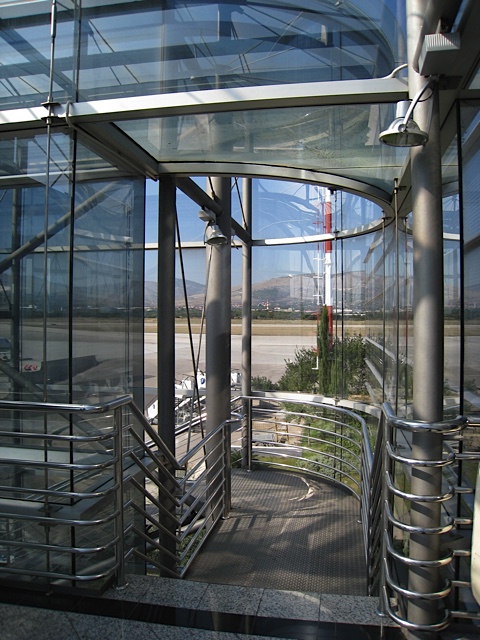 Before we boarded our flight from Split to Munich, I spent my remaining kunas, the currency of Croatia, on chocolates, then settled into my seat onboard the commuter jet for the fifty-five-minute flight. We had a rather lengthy layover in Munich, so we ate a late lunch at the airport, a surprisingly good meal of filet, roasted potatoes, grilled vegetables, and strudel for dessert.
Before we boarded our flight from Split to Munich, I spent my remaining kunas, the currency of Croatia, on chocolates, then settled into my seat onboard the commuter jet for the fifty-five-minute flight. We had a rather lengthy layover in Munich, so we ate a late lunch at the airport, a surprisingly good meal of filet, roasted potatoes, grilled vegetables, and strudel for dessert.
We arrived late in Budapest, 10:30 p.m., but had prearranged transportation from the airport directly to the Sofitel Hotel. The Parliament buildings on the hill and the bridges aglow in yellow light was a magnificent scene, picture perfect. Only a light dusting of snow would have made the setting more magical, and coming from someone who detests the cold like me, that’s admitting a lot. I couldn’t wait for morning and the chance to explore. To say I fell immediately in love with Budapest was an understatement.
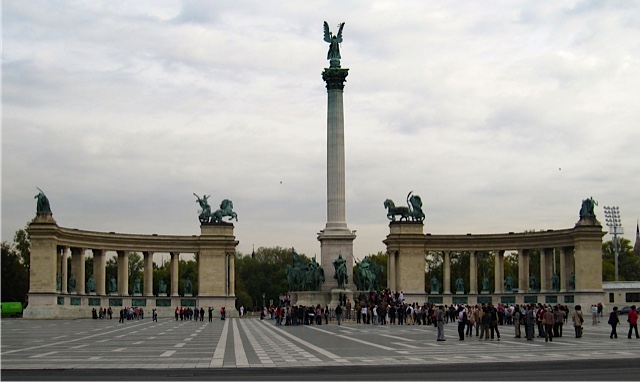 Our first order of business on our first full day was to tackle the lavish buffet breakfast set out by the hotel. During our meal, we mapped out our ambitious plans for the day. Walking was high on the agenda, so we followed our familiar regimen of collecting water bottles, sunscreen, cameras, and anything else we thought we might want or need for the morning’s excursion.
Our first order of business on our first full day was to tackle the lavish buffet breakfast set out by the hotel. During our meal, we mapped out our ambitious plans for the day. Walking was high on the agenda, so we followed our familiar regimen of collecting water bottles, sunscreen, cameras, and anything else we thought we might want or need for the morning’s excursion.
First on our sightseeing list was Heroes Square, which was quite a hike from our hotel, but the warm yet overcast day proved ideal for working off the big breakfast we had just consumed. Once we were on Andrássy Avenue, the main boulevard, it was a straight walk to the square.
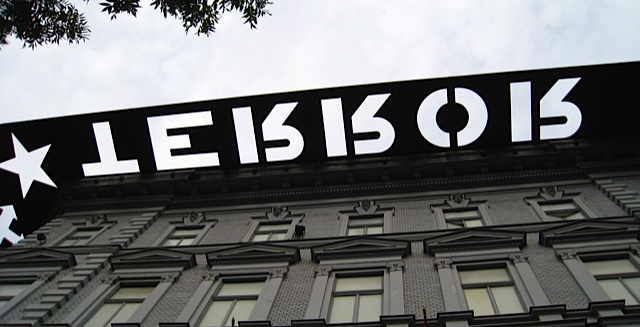 As we drew near a stark blue-gray building, we were drawn to it out of curiosity. Standing in front of the structure, we noticed its black awning with cutout letters that formed the word “TERROR.” Almost ominously, the sun peeked out, and the word was projected on the walls of the building, which turned out to be Budapest’s House of Terror. During World War II, after Hungary allied itself with Germany, it was overtaken by Hungary’s Arrow Cross Nazi party. The members practically exterminated Budapest’s Jews. Countless victims were interrogated, imprisoned, and tortured in the basement cells of the building, which is why it has such significance as a site of terror and is now a museum. On the exterior of the building at street level is a long line of plaques commemorating the victims. Seeing photos of the dead was powerfully moving, disturbing, and sobering. We continued on in silence.
As we drew near a stark blue-gray building, we were drawn to it out of curiosity. Standing in front of the structure, we noticed its black awning with cutout letters that formed the word “TERROR.” Almost ominously, the sun peeked out, and the word was projected on the walls of the building, which turned out to be Budapest’s House of Terror. During World War II, after Hungary allied itself with Germany, it was overtaken by Hungary’s Arrow Cross Nazi party. The members practically exterminated Budapest’s Jews. Countless victims were interrogated, imprisoned, and tortured in the basement cells of the building, which is why it has such significance as a site of terror and is now a museum. On the exterior of the building at street level is a long line of plaques commemorating the victims. Seeing photos of the dead was powerfully moving, disturbing, and sobering. We continued on in silence.
Heroes Square, Budapest’s largest public square, was created in 1896 to mark the one thousandth anniversary of the country’s birth. The main attraction is the Millennium Monument, completed in 1929. It honors the Magyar tribes that founded the country. The tall central column is topped with a statue of Archangel Gabriel holding a crown and the double cross of Christianity. Behind the monument on both sides are two curved colonnades, each with six pillars. Between the pillars are statues of famous Hungarian kings and important Hungarian historic figures. Constructed during the reign of the Habsburgs, the spaces between the colonnades were intended for statues of royals but were used instead for statues of freedom fighters following World War II. On top of the colonnades were statues symbolic of knowledge, glory, war, peace, work, and welfare.
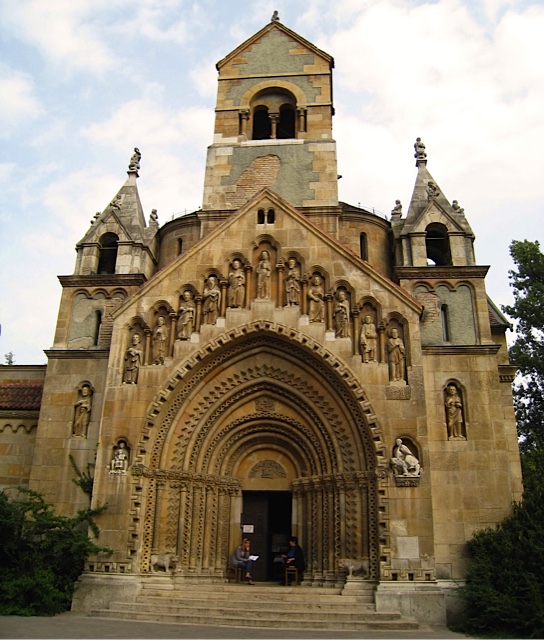 From Heroes Square we proceeded on to Vajdahunyad Castle, also built in 1896 as part of the Millennial Exhibition. The castle’s design incorporates several architectural styles copied from landmark buildings from across the Kingdom of Hungary, especially the Hunyadi Castle in Transylvania, (now in Romania). Depicted are the styles of the Romanesque, Gothic, Renaissance, and Baroque periods. Originally built of cardboard and wood, because of its popularity it was rebuilt in stone and brick from 1904–1908. Today the castle houses the Museum of Hungarian Agriculture.
From Heroes Square we proceeded on to Vajdahunyad Castle, also built in 1896 as part of the Millennial Exhibition. The castle’s design incorporates several architectural styles copied from landmark buildings from across the Kingdom of Hungary, especially the Hunyadi Castle in Transylvania, (now in Romania). Depicted are the styles of the Romanesque, Gothic, Renaissance, and Baroque periods. Originally built of cardboard and wood, because of its popularity it was rebuilt in stone and brick from 1904–1908. Today the castle houses the Museum of Hungarian Agriculture.
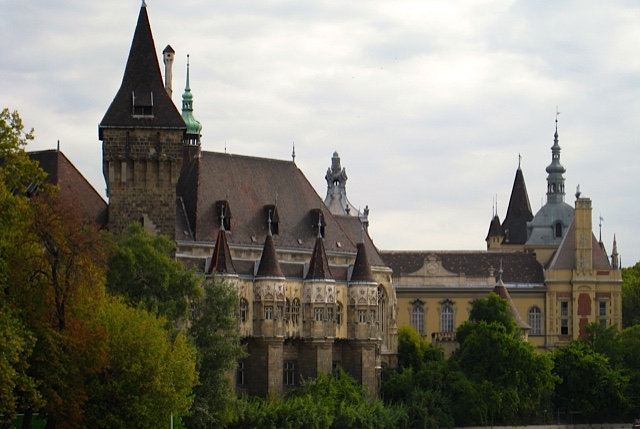 I snapped quite a few photos of the castle, because it will be featured in a future Darcy McClain thriller. After my short photo shoot, we paused in the courtyard to photograph the statue of Anonymous, the nameless medieval chronicler to King Béla. Which King Béla is uncertain, as there were four with this name.
I snapped quite a few photos of the castle, because it will be featured in a future Darcy McClain thriller. After my short photo shoot, we paused in the courtyard to photograph the statue of Anonymous, the nameless medieval chronicler to King Béla. Which King Béla is uncertain, as there were four with this name.
The castle is surrounded by Városligeti Lake, a man-made lake used for boating in the summer and ice skating in the winter. Skating was once a favorite winter sport of the elite and is now a favorite pastime for all.
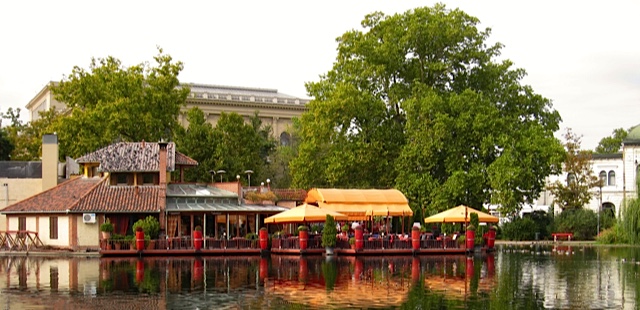 A little before noon, we wandered past the entrance to the Budapest Zoo but unfortunately did not have the time to stop in, as we had lunch reservations at Robinson Restaurant. The restaurant is on a small island on Városligeti Lake, a pleasant, relaxing setting. All of these sights, Heroes Square, Vajdahunyad Castle, Robinson Restaurant, the zoo, as well as other landmarks, are located in the city park area and are within easy walking distance of each other. Service at the restaurant was slower than anticipated, so when we finished our meal we wanted to return to the hotel as quickly as possible. On our way to the Robinson, I had spotted a sign for a subway and suggested we check this out.
A little before noon, we wandered past the entrance to the Budapest Zoo but unfortunately did not have the time to stop in, as we had lunch reservations at Robinson Restaurant. The restaurant is on a small island on Városligeti Lake, a pleasant, relaxing setting. All of these sights, Heroes Square, Vajdahunyad Castle, Robinson Restaurant, the zoo, as well as other landmarks, are located in the city park area and are within easy walking distance of each other. Service at the restaurant was slower than anticipated, so when we finished our meal we wanted to return to the hotel as quickly as possible. On our way to the Robinson, I had spotted a sign for a subway and suggested we check this out.
In the midst of a language problem with the woman at the subway’s ticket office, and growing more frustrated every time she refused our money, we were approached by a young woman who asked if she could be of assistance. We explained our dilemma, as we saw it, and the young woman said something to the ticket taker. The older woman gave our Good Samaritan an exasperated look, snatched our forints from the young woman’s hand, and handed over two tickets along with some change. We thanked her and asked what had we done wrong. “Nothing. She wanted the exact price for the tickets because she is short on change. Stay on the train until the line terminates,” said our Good Samaritan as she boarded the subway. Next week, we explore more of Budapest’s greatest landmarks.

